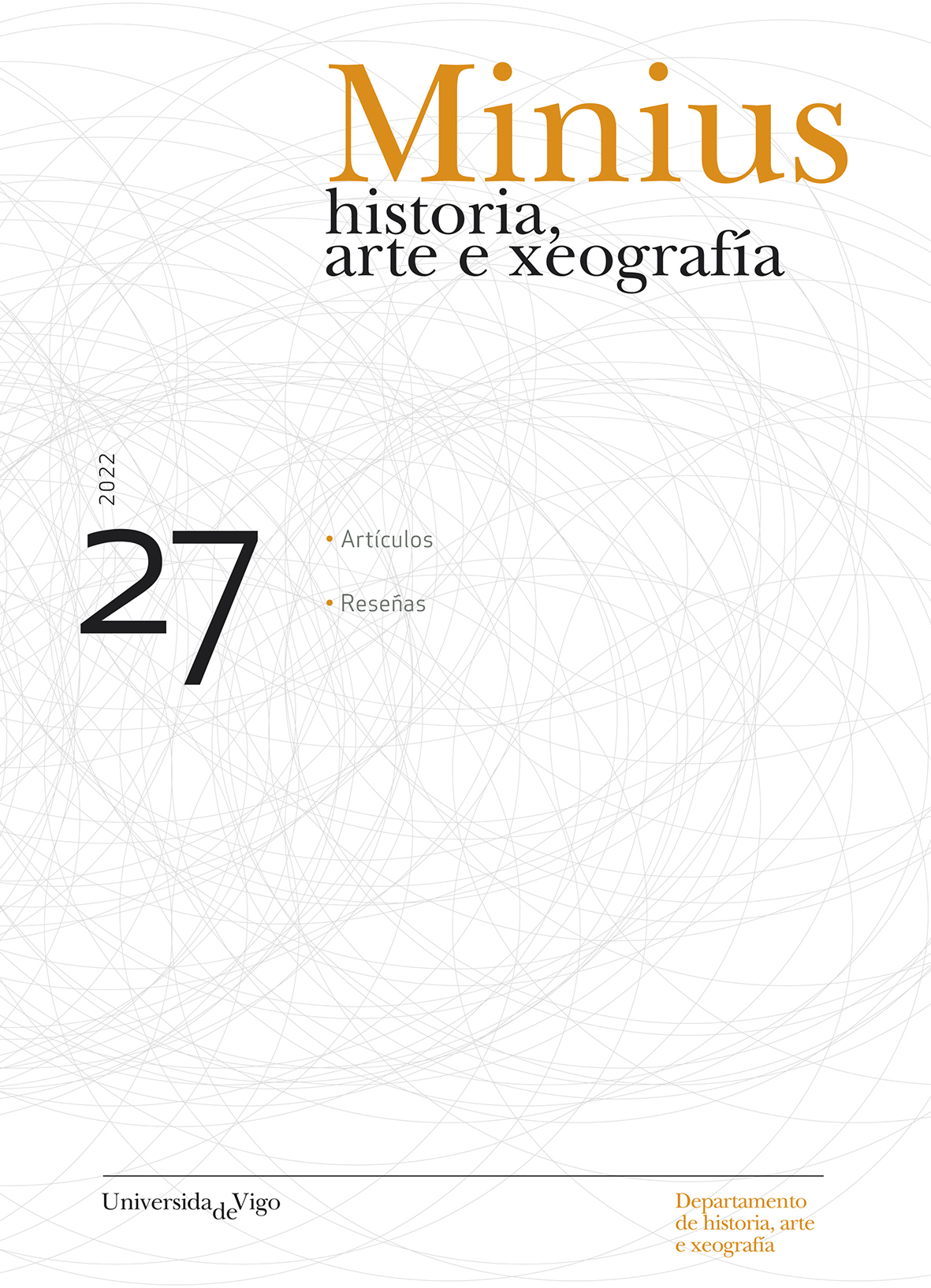Las infraestructuras de transportes y comunicaciones por ferrocarril en Galicia
Una oportunidad para el desarrollo económico regional 1941-2011
DOI:
https://doi.org/10.35869/mns.v0i27.4413Palabras clave:
intermodalidad, política indicativa, conectividad territorial, accesibilidad territorial, spillover effect, crowding-in, cadena modal del transporte, operatividadResumo
El estudio del esfuerzo inversor en ferrocarril en España nos revela que unos territorios han tenido mucho antes que otros sus caminos de hierro. La primera línea ferroviaria española en ser construida y abierta al tráfico comercial no se encontraba en la Península, sino en la caribeña isla de Cuba. El itinerario La Habana-Bejucal-Güines fue el primer itinerario abierto al transporte. Esta traza del camino de hierro no se había ejecutado para impulsar los flujos de pasajeros. La construcción de este ferrocarril se había producido por la importancia de las mercancías que estaba produciendo la isla de Cuba y su alto valor añadido: tabaco, azúcar, melaza, ron, maderas nobles. La construcción de los caminos de hierro en la Península presenta también no pocas particularidades. La primera, como es bien conocida, es que la traza ferroviaria se comenzó a ejecutar desde el interior peninsular hacia la periferia, cuando lo más racional habría sido desde los puertos, por los que llegaban las mercancías y materias primas para el camino de hierro, hacia el interior peninsular. En segundo lugar, territorios regionales tales como Galicia, Asturias, Cantabria, etc., acusaron un retraso en la ejecución de capitales destinados a construir el ferrocarril de acceso a estas regiones. Las obras de ejecución de los caminos de hierro en Galicia se prolongaron por un espacio superior a más de un siglo. El estudio de la modernización y la operatividad del ferrocarril nos muestra como incluso en la segunda década del siglo XXI Galicia tiene a bastantes comarcas enclavadas geográficamente en materia ferroviaria por cuanto no se logró aún modernizar el camino de hierro ni el material rodante. En esta situación anómala se encuentra, por un lado, Ferrol y su comarca. En segundo lugar, Lugo. En tercer lugar, debemos hacer mención a la traza ferroviaria de titularidad de FEVE. En cuarto lugar, las conexiones de Vigo-Ourense están acusando una baja accesibilidad territorial por transitar por una vía convencional que no se encuentra en condiciones adecuadas para incorporar un material rodante dotado de óptimas prestaciones. Aún más, la modernización del camino de hierro a Vigo con conexión en Ourense se está programando en base a una variante fijada en Maside-Cerdedo-Portela. El índice de rodeo penaliza a este tráfico. Lo más propio sería un desdoblamiento de la red ferroviaria por el itinerario: Ourense-Mondariz-Porriño-Vigo. Por tanto, mientras unas líneas disponen, desde el año 2011, momento en el que se abre al tráfico comercial la línea La Coruña-Santiago-Ourense cubierta por los trenes AVANT, de una oferta de servicio dotado de una buena accesibilidad por ferrocarril, otras, por el contrario, no han logrado mejorar sus condiciones de operatividad que se estaban comercializando en los 1980 y 1990. En esta realidad se encuentra la conexión La Coruña-Betanzos-Ferrol; La Coruña-Lugo-salida hacia la meseta; y la operatividad del tren de ancho métrico de FEVE Ferrol-Ribadeo-Gijón-Valmaseda. Por otro lado, la modernización de la línea de La Coruña-Ourense posibilita un flujo diario de viajeros por sentido del tráfico en unos niveles de accesibilidad atractivos. Ahora bien, las poblaciones que se encuentran intercaladas y que desean cubrir estos itinerarios con un material rodante de trenes regionales siguen padeciendo el pesado lastre de superar en más de tres horas este trayecto. En pocas palabras, existen dos servicios muy contrastados y de unas calidades desiguales que se están ofertando para dotar de servicio de proximidad/cercanías a las poblaciones comarcales intersticiales: Ordenes; Lalín; O Carballiño. Por esta causa, debemos aún afirmar que esta modernización no es un hecho.



